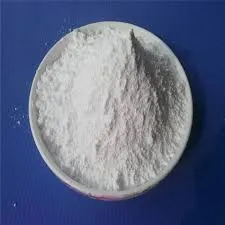Water Treatment pH Adjustment Ensuring Optimal Water Quality
Water quality is paramount for both environmental health and human consumption. One of the critical parameters in assessing water quality is its pH level. pH, which measures the acidity or alkalinity of water, can significantly impact various aspects of water treatment processes and the overall effectiveness of water purification. Adjusting pH is often necessary to meet regulatory standards and to enhance the efficiency of treatment methods.
The Importance of pH in Water Treatment
pH levels can influence the solubility and toxicity of various substances present in water. For instance, at lower pH values (more acidic conditions), heavy metals such as lead and copper can become more soluble, leading to higher concentrations of these potentially harmful contaminants. Conversely, in more alkaline conditions, substances like phosphorus can precipitate, which could contribute to scaling in pipes and treatment equipment. Thus, maintaining the appropriate pH level is essential to mitigate these risks and ensure safe water for consumption.
Methods of pH Adjustment
There are several methods used to adjust pH levels in water treatment, primarily involving chemical additives
.1. Acid Addition To lower the pH of water, acids such as sulfuric acid or hydrochloric acid are commonly used. These acids can effectively neutralize alkaline substances, bringing the pH down to desired levels. This method is particularly useful in industrial wastewater treatment, where pH levels may be significantly higher due to the processes involved.
water treatment ph adjustment

2. Alkali Addition On the other hand, when the pH needs to be raised, alkalis such as sodium hydroxide, calcium carbonate, or soda ash (sodium bicarbonate) are added. These substances react with the acids in the water, increasing alkalinity and raising the pH level.
3. Biological Treatment In certain situations, natural biological processes can also be employed for pH adjustment. For example, the use of biofilters containing specific microbial populations can help in stabilizing pH by converting organic acids into less harmful compounds.
4. Membrane Filtration Modern techniques such as reverse osmosis can also assist in pH adjustment by selectively removing ions that contribute to acidic or alkaline conditions.
Monitoring pH Levels
Regular monitoring of pH levels is crucial in water treatment processes. Automated pH sensors can provide real-time data, allowing operators to make timely adjustments. Consistent monitoring ensures compliance with environmental regulations and guarantees that the water remains within the safe pH range, typically between 6.5 and 8.5 for drinking water.
Conclusion
In conclusion, pH adjustment is a vital aspect of water treatment that cannot be overlooked. It plays a crucial role in ensuring that water is safe for consumption and meets environmental standards. By employing various methods for pH adjustment, water treatment facilities can effectively manage water quality, mitigate potential risks associated with extreme pH levels, and contribute to sustainable water management practices. Ensuring optimal pH is not just about maintaining clean water; it is fundamentally about protecting public health and preserving the ecosystem. Therefore, stakeholders in water management must prioritize pH monitoring and adjustment to safeguard water resources for future generations.

